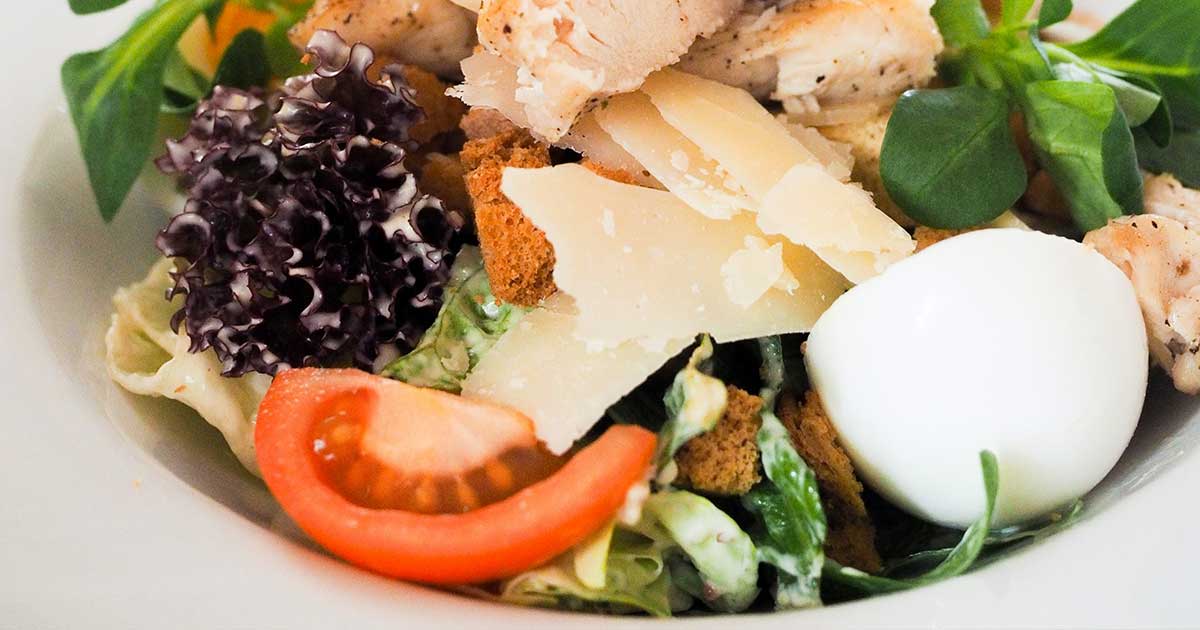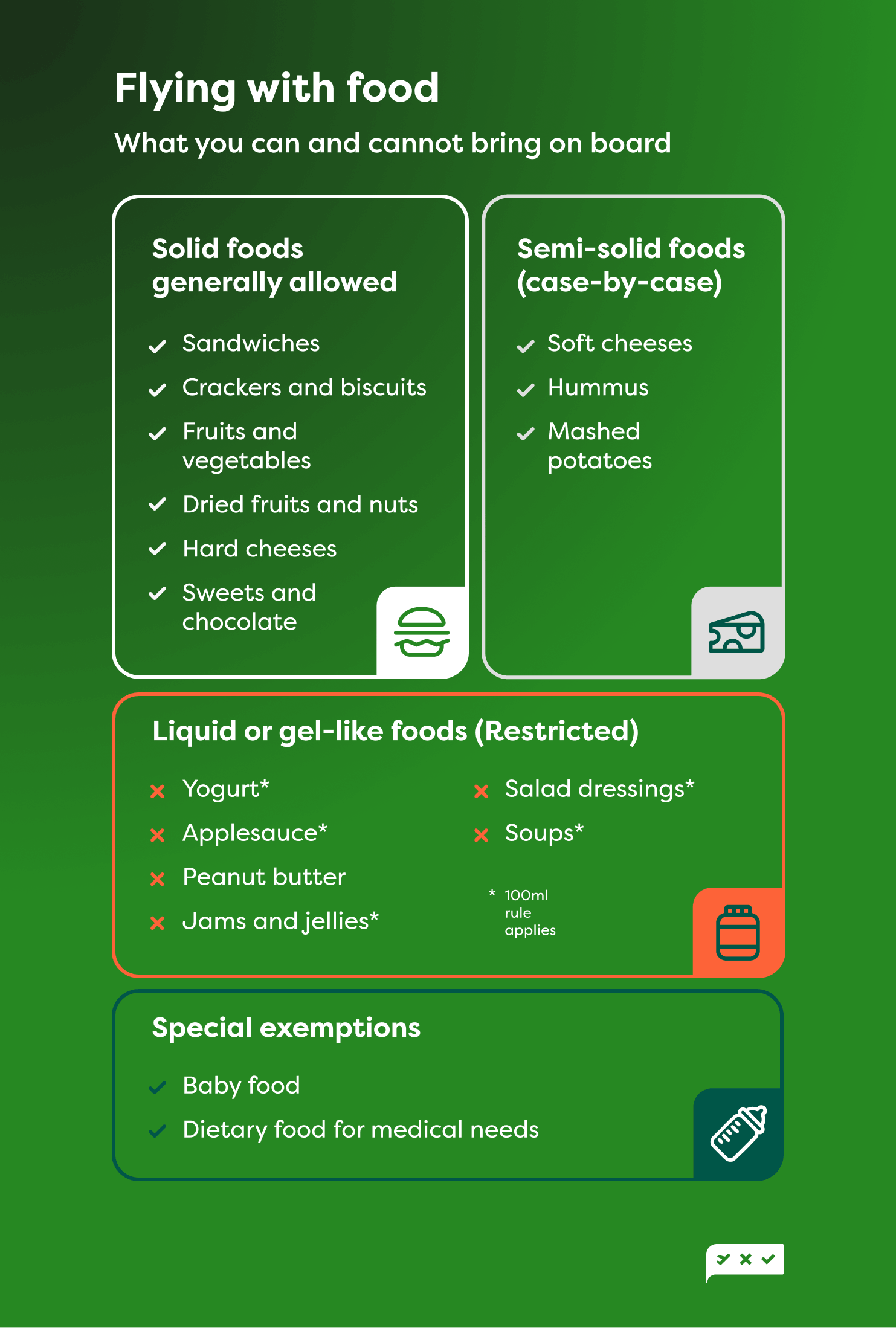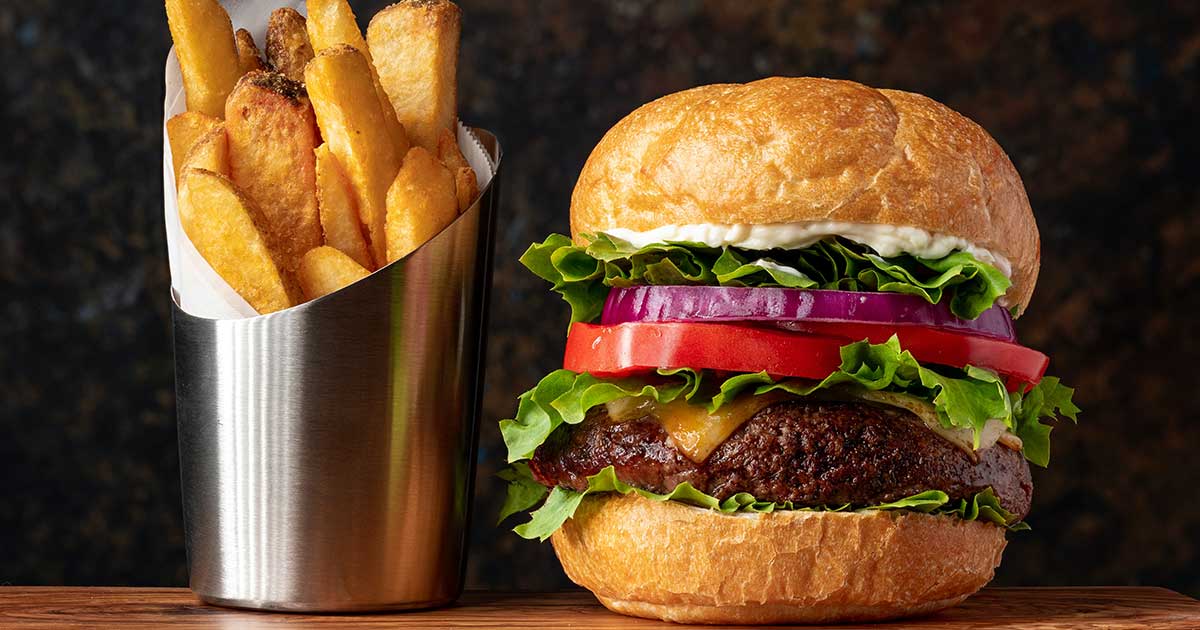The most important information on “Eating on the plane”
- It is generally permitted to take food with you, but only a limited amount of liquids and creams.
- Sharp and explosively dangerous objects and weapon-like utensils are prohibited.
- Disposable plastic cutlery and glass bottles should be avoided.
- Food in hand luggage must be hygienically packed.
- Passengers with special diets and allergies should inform the airline in advance.
- Drinks can be purchased locally or on the plane.
- Baby and children’s food and medicines are permitted.
- Stricter regulations must be observed for flights to the USA.
- Airlines may have their own rules regarding taking food on board.
- If in doubt, you should check with the airline in advance.
Did you have a flight delay or cancellation? Check your rights now and increase your chances of compensation
Airplane food is not exactly known for being high cuisine. So it’s no wonder that you, as a passenger, are considering taking food onto the plane. But is this allowed? The answer can be found in the following blog article.
Can I get through security with food?
Am I allowed to take food onto the plane? The answer is yes and no. Solid and dry food that is transported in a sealed and leak-proof container can usually be taken through security without any problems. Snacks in their original packaging are also allowed on the plane. At least as long as they can be easily identified by security staff and are packed airtight.
Can I get through security with alcohol?
The temptation to take a bottle of champagne onto the plane can be very tempting, especially for people with a fear of flying. Here, alcohol can calm the nerves a little. The good news is that alcoholic beverages may be taken on board under certain conditions. The 100-1-1 rule applies to alcohol as to all other liquids.
If the alcoholic beverage of your choice contains more than 22% alcohol, you may neither stow it in your hand luggage (or travel backpack) nor pack it in your suitcase.
So you can carry a properly packed glass of champagne or wine. However, you should leave stronger, alcoholic drinks such as vodka or rum at home.
Important:
The 100-1-1 rule states that you may only take 100 ml of liquid per container on board. Furthermore, these containers must be transported together in a transparent, resealable plastic bag with a maximum capacity of one litre. 100 ml, 1 container, 1 litre – i.e. 100-1-1.
Can I get through security with homemade food?

For homemade food, as for other snacks, solid and dry food can be carried without problems as long as it is properly packaged. The consistency of the food you bring with you is crucial here. Soups and stews are unsurprisingly considered liquids. But most air travelers should probably be able to do without hot, homemade soup without any problems.
What food is allowed in hand luggage?
Permitted food
- Sandwiches (wrapped in transparent film or stored in a box)
- Fruit and salads
- Crisps, biscuits and other sweets such as chocolate bars
- Tea bags and instant drinks
Prohibited foods
- Jelly-like spreads such as jam, nut nougat creams, peanut butter in a jar, dips, ketchup, etc.
- Sauces, dressings
- High-proof alcohol
- Soup
Guidelines – this food is allowed on the plane

Most passengers are already familiar with the regulations on liquids. But when it comes to food brought onto the plane, things can get a little confusing.
Not only the airlines and security officials, but also customs, want to know what food you are taking on board in your hand luggage. If you are travelling within the EU, you only need to declare alcohol, tobacco and coffee. When flying from the EU to a non-EU country or vice versa, meat, milk, cheese, eggs and other animal products can cause problems. This is due to both cultural and health reasons. Airlines often allow you to take the food with you. However, it is better to eat the food already on the plane and not bring it into your destination country. The regulations for importing food into the USA are particularly strict.
Tip: If you want to bring food into the United States as a gift, for example, be sure to find out about the restrictions beforehand. Declare all the food you are bringing with you. Otherwise, you could face heavy fines.
You don’t want to take food with you?- That’s what meals cost on different airlines
- Lufthansa: Lufthansa welcomes its passengers on short flights of up to 30 minutes with chocolate. For flights of up to 60 minutes, you also receive a free bottle of water.
- Eurowings: The Lufthansa subsidiary Eurowings offers passengers on short- and medium-haul flights a free meal only in the expensive BizClass. In the Basic and Smart fares, snacks and drinks can be purchased on board. On long-haul flights, the situation is somewhat different. Here, in the Standard Economy fare Smart, you get one hot and one cold meal and one drink each free of charge.
- Tuifly: Tuifly offers travellers only a very limited range of meals. The Perfect fare includes a snack and a non-alcoholic drink. In the cheapest Pure package you have to buy snacks and drinks yourself (from 6.90 euros)..
- Ryanair: With the Irish low-cost airline Ryanair, you don’t get free meals on board. On the plane, for example, you can buy a menu consisting of a snack, a drink and a main course for 10 euros. On certain flights, you can also pre-order special meal requests, such as a breakfast package.
Can I take fresh food on the plane?
Many people don’t trust food on planes. So eating your food on the plane is a good alternative.
Fresh food such as raw meat, fresh fruit, vegetables, seafood or eggs is usually allowed in hand luggage. At least if they are sealed so that no odours or liquids can escape.
However, these regulations only apply to domestic flights – for international flights, the rules for importing fresh food, especially fruit and vegetables, are very strict. The reason for this is that pests or diseases can be imported into the destination country with these foods.
Tip: Always check with customs first if you plan to take fresh food on the plane.
How much food can you take on the plane?
You now know under what circumstances you can take food on the plane. But how much food are you allowed to take in your hand luggage?
With fruit and vegetables, mostly everything is allowed. For liquid and jelly-like foods, such as honey, as with other liquids, up to 100 ml each is allowed and must therefore be carried in a transparent bag with a maximum capacity of one litre.
What food is prohibited on the plane?
If you are travelling within the EU, you are allowed to carry meat or dairy products in your hand luggage. At least as long as they are for your consumption. This rule applies to both plants and plant products. When travelling from the EU, you should always check the import regulations of your destination country.
We make these mistakes when flying: Find out more about these mistakes here.
You might also be interested in this: What is allowed on the plane?
What can you take on the plane in your hand luggage?
What if I need to take food for my baby or medication?
Food for children on the plane is a special matter. Especially when it comes to baby food. But don’t worry. If you are travelling with a child up to two years old, airlines allow you to bring your food for the little ones. And that’s in the quantity used.
Attention: Even if it is only baby food or powder, this must be declared to customs. This way you can avoid being held up because of it.
Baby food, breast milk, distilled water and other baby items are exempt from the 100-1-1 rule. Nevertheless, the food should be stored in an easily accessible place, as it will probably be checked again separately. Expect security personnel to open and inspect the containers. Also, do not take more baby food on board than you need for the trip.
Why does food taste different on planes?
The bad reputation of aeroplane food is only partly justified. Food on planes often doesn’t taste good because the change in air pressure affects your sense of smell and taste.
Can I take water on the plane?
Yes, it is permitted to take water onto the plane as long as certain conditions are met. As a rule, passengers are allowed to carry water in containers of up to 100 milliliters. These containers must be stowed in a transparent, resealable plastic bag with a maximum volume of one liter. As a rule, one such bag is permitted per passenger.
However, it is important to note that the regulations may vary depending on the airline and country. It is therefore advisable to check the specific guidelines of the airline and the country of departure to ensure that you comply with the current regulations.
Are empty bottles allowed on the plane?
Yes, it is generally permitted to take empty bottles onto the plane. The safety regulations for liquids apply primarily to full containers. However, you must ensure that the bottles are truly empty, as airport security checks can be made to ensure that no prohibited substances are smuggled in empty containers. It is also possible to take empty resealable bottles with you to refill them with liquids after the security check. However, it is advisable to check the specific security regulations of the airline and destination airport before traveling, as these may vary slightly.
How can Flightright help you?
Your hand luggage is filled with snacks, but now the airline is getting in the way of your vacation happiness? Your flight is overbooked, delayed or canceled? Your luggage has been delayed or lost?
Tip: Flightright can help you enforce your air passenger rights! You can check your claims with us free of charge.
As experts in the field of air passenger rights, we enforce your right to compensation against the airline!

